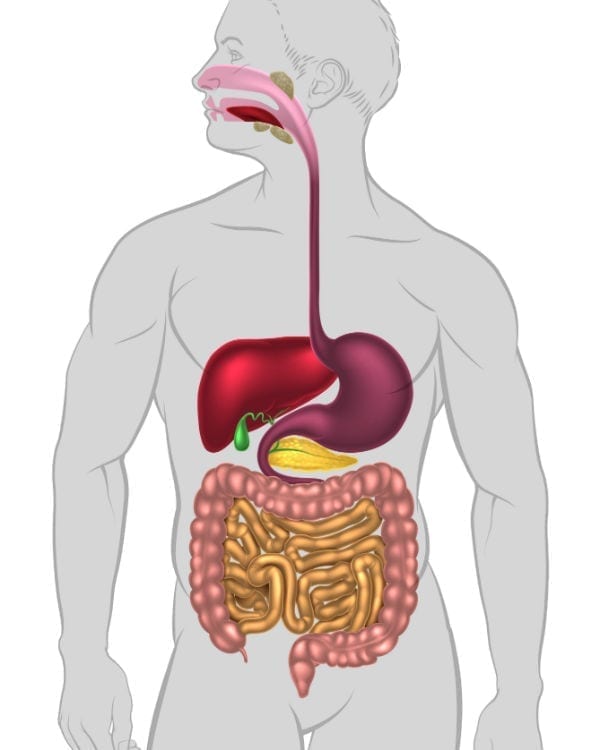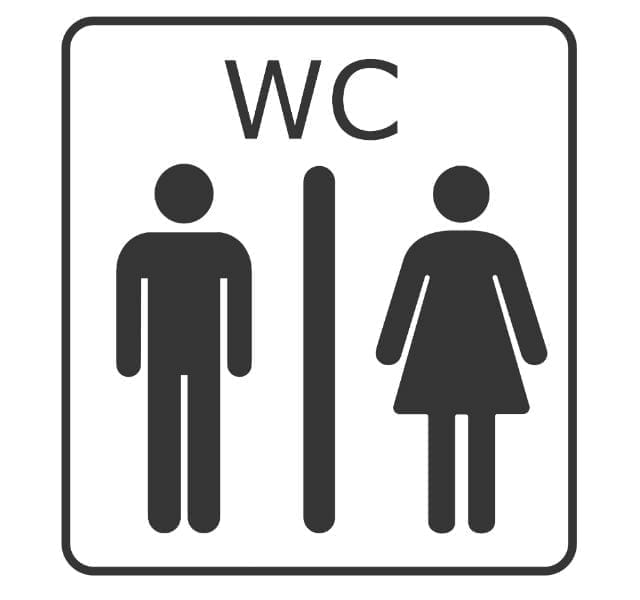Understand your digestive system – from your mouth to your colon
Many people suffer from digestive issues such as constipation and flatulence. However, issues can be easily avoided if we understand the workings of our digestive system – and how we ensure a healthy digestive flow.
We would rather not concern ourselves with our digestion and we would rather not speak about our gut. Normally, our digestive system works as it is supposed to. You put something in one end and then something comes out the other end. Typically, it is only when we experience digestive issues that we start taking an interest in what happens in our bodies. On the other hand, it can be quite the eyeopener for many of us and help to conquer digestive issues.

One continuous system
In order to understand your digestive system, you need to see it as one long, continuous system, stretching from your mouth to your anal orifice. The task of this system is to break down the food you eat in order for the nutrients to be absorbed by your bloodstream and taken to the area of your body where they are needed.
Your mouth is the starting point
Your digestive system only works properly if your food is sufficiently broken down. This is why the starting point of your digestive system – your mouth – is a very important part of the system. This is where the food is first broken down. This happens as you chew the food and mix it with your saliva. And there is plenty of saliva for every meal of the day. Our salivary glands produce between 0.7 and 1 litre of saliva every day. In addition to protecting your teeth, the enzymes in your saliva help to break down the food you eat to make it easier to digest further along your digestive system.
The oesophagus
From your mouth, the food slides through your approximately two-centimetre-wide and approximately 25- centimetre-long oesophagus through your throat to your stomach. Your oesophagus is part of your digestive system but has no other function than serving as a means of transport for your food – from your mouth to your stomach. Here, your oesophagus is attached to the right-hand side of your stomach by a ring-like muscle called the lower oesophageal sphincter. When you swallow, the lower oesophageal sphincter relaxes to allow the food to enter your stomach.
The fact that your oesophagus is attached to the right-hand side of your stomach is a stroke of genius on the part of nature because this location relieves some of the pressure on your stomach. When we move, laugh or cough, we tense our stomach muscles and that adds pressure on the stomach from below. If the oesophagus were attached to the stop of the stomach, we would experience acid reflux every time we took a step.

The stomach
Our stomach is located higher up than you would think. It starts right underneath the left nipple and ends under the right costal angle. When people say they have a stomach-ache, in fact they often refer to the gut.
In the stomach, the digestive process really picks up. Your stomach muscles ensure that the food is mixed well with the digestive juices produced by your stomach and the food is moved around and broken down into small particles that your small intestine continues to process.
The stomach itself is lopsided with one side being longer than the other. This means that large folds are formed on the inside of the stomach – another stroke of genius on the part of nature. Because this means that liquid can flow directly from the oesophagus along the shorter, right-hand side of the stomach and down to the opening of the small intestine, whereas solid food is led into the left-hand, more spacious side of the stomach where the digestive process takes place.
After two to four hours in the stomach, the semi-digested food is led further into your body through yet another sphincter – the pylorus – and into your duodenum and your small intestine.
The small intestine
After the pylorus, which is the topmost part of the small intestine, the three-to-six-meter-long small intestine winds around itself and this is where the majority of the digestive process takes place. The digestive process in your small intestine is aided by bile (produced by your liver) and enzymes produced by your pancreas. Right at the top of your small intestine, there is a small hole in the intestinal wall. Through this hole, digestive juices are dispersed across the food. This helps to break down the food into tiny parts that can be absorbed by your body. The nutrients are separated and absorbed through the wall of your small intestine and led into your bloodstream from where it is distributed to your entire body. A neat system which, in the majority of cases, is automatic and adapted to the food you eat.
The large intestine and the rectum
The last part of your digestive system is the large intestine. Here, approximately 1.5 kg of intestinal bacteria aid in your digestion. The popular name of this enormous collection of bacteria is the intestinal flora, however the correct name is the microbiome (small lives) – and this is the key to your health. The job of the biome is, amongst others, to:
- Break down the fibres and the starch not dealt with by your small intestine
- Transform dietary fibres into fatty acids that are the most important nutrients for the intestinal cells
- Keep the mucous membrane of your intestine healthy and coated to prevent harmful substances from entering your bloodstream
- Fight pathogenic bacteria
- Produce important vitamins
- Keep your immune system well-balanced
This thorough processing in your large intestine can last up to 16 hours. And, like in the case of your small intestine, everything that can be extracted from your food is absorbed into the bloodstream by your large intestine.
The resulting waste products are turned into stools and expelled through your rectum.
Stools
Not two people are alike and, therefore, saying what is healthy and normal can be rather difficult. This also applies to our digestive rhythm (Link to the blog post ”Check the toilet bowl”). Where it may be usual business for one person to produce stools once or several times every day, the usual business for the next person may be for it to occur three to four times every week.

This is how to ensure a healthy flow
As pointed out previously, a healthy digestive system starts by chewing your food properly. But many other things influence your digestion. By way of example, stress can influence your digestive system. You may also suffer from food intolerance – e.g. you may be gluten or lactose intolerant. Issues such as bloated stomach, stomach pains, constipation or diarrhoea are some of the most common causes for contacting your doctor.
When you and your doctor have ruled out the possibility that your issues are caused by disease, you can do a great deal yourself to attain a healthy digestive flow:
-
Drink water
Often, constipation is caused by the fact that you do not take in enough liquids. Drink one-and-a-half to two litres of water every day. Water aids in the utilisation of the dietary fibres in the food and ensures that the food is not left to rot in your large intestine.
-
Eat plenty of fibres
Dietary fibres help the food pass through your digestive system more quickly and help you get rid of both a bloated stomach and constipation. When we eat e.g. oats, bananas or beans, they pass through to the large intestine without being digested and feed health-promoting bacteria. (Link to the blog post: (”One and a half kilos of intestinal bacteria are key to your health”)
-
Be physically active
When you move and take exercise, you keep your peristalsis going. This is a process that makes your intestinal muscles contract in a coordinated and undulating movement to mix your food with the gastric juices that are added and pushes the food through your digestive system.
-
Eat regularly
Skipping meals and then eating a huge meal at the end of the day is not healthy. Keep your digestive system going by eating smaller, regular meals in the course of the day.
-
Go to the bathroom when you feel the urge
Holding back is unhealthy. When you feel the urge to go to the bathroom, then give in to the urge. Putting off bathroom breaks for longer periods of time can cause constipation
Af Christa Z. Dahl
Sources:
“The way to a healthy stomach” (”Sund mave sådan”) by Søs Wollesen
Article on ing.dk, 14 May 2016: “Essential assistants – and another way to treat and prevent: Your life is controlled by bacteria” (”Livsvigtige hjælpere – og ny vej til behandling og forebyggelse: Bakterierne styrer dit liv”).
”Gut; the inside story of our body’s most underrated organ” by Giulia Enders

 Made in Scandinavia
Made in Scandinavia